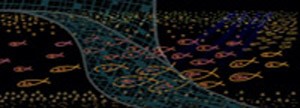Northwest Atlantic Fisheries Organization (NAFO)
The Northwest Atlantic Fisheries Organization (NAFO) is an intergovernmental fisheries science and management body that was founded in 1979 as a successor to ICNAF (International Commission of the Northwest Atlantic Fisheries) (1949-1978). NAFO’s overall objective is to contribute through consultation and cooperation to the optimum utilization, rational management and conservation of the fishery resources of the NAFO Convention Area, with the exception of salmon, tuna/marlins, whales and sedentary species (e.g. shellfish). Currently NAFO has 12 Members from North America, Europe, Asia and the Caribbean.
The structure of NAFO is set up of four main bodies: Fisheries commision (FC), Scientific Council (SC), General Council and NAFO Secretariat. The SC gives advice to the FC upon request on the status of fish stocks in the NAFO Convention Area to Fisheries Commission and Coastal States. In turn, there exist several working groups which serve as advisors for both the SC and FC on more specific topics.
Working Group on Ecosystem Science and Assessment (WGESA)
In 2007 Scientific Council established a Study Group on the Ecosystem Approach to Fisheries (EAF). This group first met in the spring of 2008. This group became the Scientific Council Working Group on the Ecosystem Approach to Fisheries Management (WGEAFM), which met annually to provide guidance to Scientific Council on specific ecosystem-related issues and requests from the Fisheries Commission. This group also operates within a set of long-term Themes and Terms of Reference that are being systematically addressed by the group into the future. These build on the “Roadmap for Developing an Ecosystem Approach to Fisheries for NAFO” (Roadmap to EAF). In 2013 this working group changed its name to the Working Group on Ecosystem Science and Assessment (WGESA).
The multispecies model that will be develope with the project GADCAP has its rationale in the objectives of the NAFO convention and the request from the SC to the WGESA to improve the knowledge about interactions between cod, redfish and shrimp in the Flemish Cap, and explore the feasibility by which these three species could be maintained at levels capable of producing a combined maximum sustainable yield. Hence GADCAP will be developed in continue interaction with the lines of work of the WGESA to provide to the NAFO SC responses to these questions from a comprehensive perspective. Attendance to the annual meetings of WGESA and NAFO SC are programmed.

